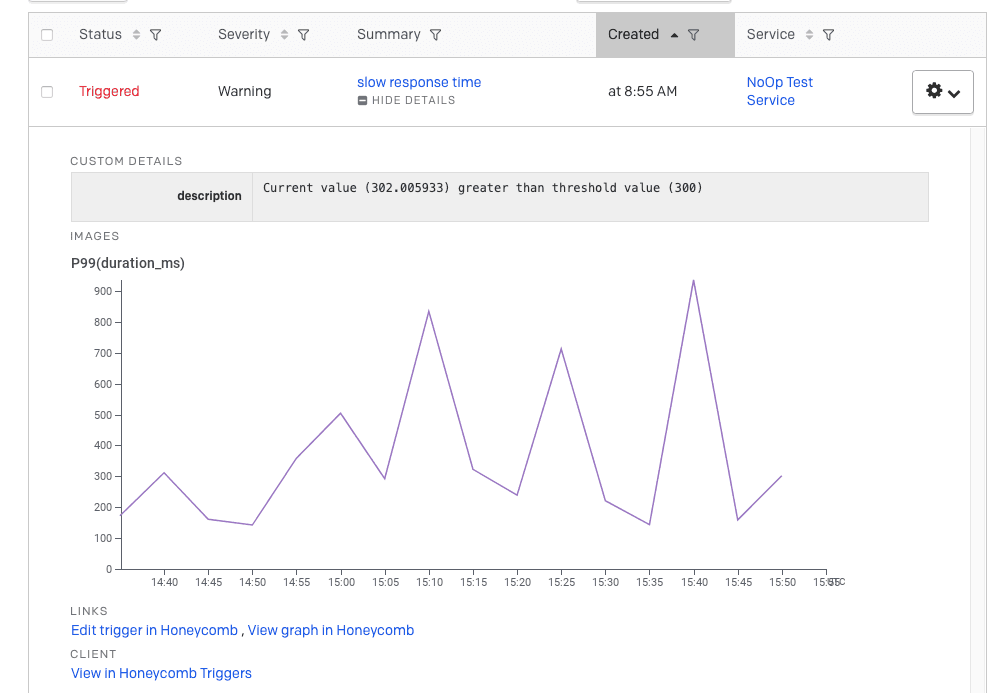Honeycomb Announces Major Updates to PagerDuty Integration
Today, we’re announcing major new updates to Honeycomb’s PagerDuty integration. These updates put more of the information you need into PagerDuty notifications and allow for greater configurability. These enhancements are available to all users who leverage Honeycomb Triggers and Burn Alerts to send notifications via PagerDuty.

By: George Miranda

Today, we’re announcing major new updates to Honeycomb’s PagerDuty integration. These updates put more of the information you need into PagerDuty notifications and allow for greater configurability. These enhancements are available to all users who leverage Honeycomb Triggers and Burn Alerts to send notifications via PagerDuty.
What’s new in the PagerDuty integration
We’ve updated Honeycomb Triggers and Burn Alerts to use PagerDuty’s V2 API, which introduces substantial new functionality, including greater configurability for alert payloads. You may have noticed that we’ve been continuously releasing gradual improvements to this integration experience, but today marks the general availability of all planned changes as we make use of the new API.
A new Recipients API has been added that is available to all Honeycomb customers. Beyond supporting the PagerDuty integration, it allows for full management of email and Slack webhook recipients. This change allows you to use native PagerDuty IDs in your Triggers and Burn Alerts to create an exact match for intended recipients.
Configurable severity is now available for each PagerDuty recipient to define the severity of notifications for Triggers and Burn Alerts. The severity can be set to Critical, Error, Warning, or Info. If you do not set a value, the default severity continues to be Critical. This new change allows you to create PagerDuty incidents from Honeycomb Triggers and Burn Alerts while taking advantage of custom PagerDuty rules and escalation policies based on different severity levels.
Honeycomb graphs now appear in your PagerDuty notifications. It can be useful and efficient to contextualize a PagerDuty notification with a Honeycomb graph of the triggering condition. Previously, these graphs were only available via the Honeycomb UI. Now, they’re included with your PagerDuty notifications.

Configuration as code is now enabled for all PagerDuty integration settings. Triggers, Burn Alerts, Recipients, and Severity are all now configurable via the Honeycomb UI, API, or the Honeycomb Terraform Provider. Terraform Provider support is now available in v0.8.0 of the provider.
These new changes should give you greater context and control of PagerDuty notifications, which are typically triggered during conditions which may be business critical.
“Engineering teams are under pressure to deliver high-performing and reliable digital services in production because they’re what drive excellent customer experiences,” said Steve Gross, Sr. Director, Global Technology Ecosystem at PagerDuty. “By giving teams more of the observability data they need, Honeycomb’s new PagerDuty integration helps them reduce the time it takes to resolve incidents and remove performance issues.”
Try it today
The new PagerDuty integration functionality is available for you to try today. If you haven’t yet, you can get started with Honeycomb and PagerDuty for free. Give it a shot and, as always, let us know what you think by dropping into Pollinators with questions and comments.
Want to know more?
Talk to our team to arrange a custom demo or for help finding the right plan.